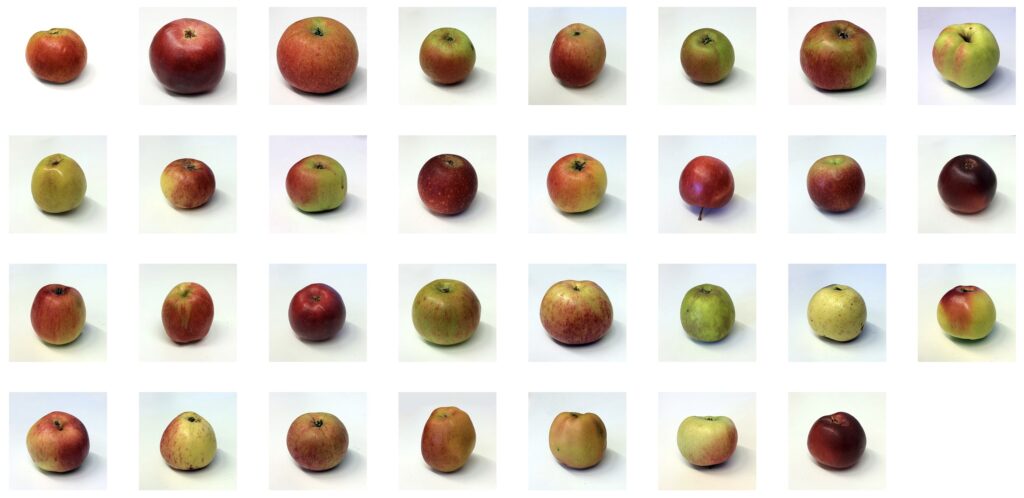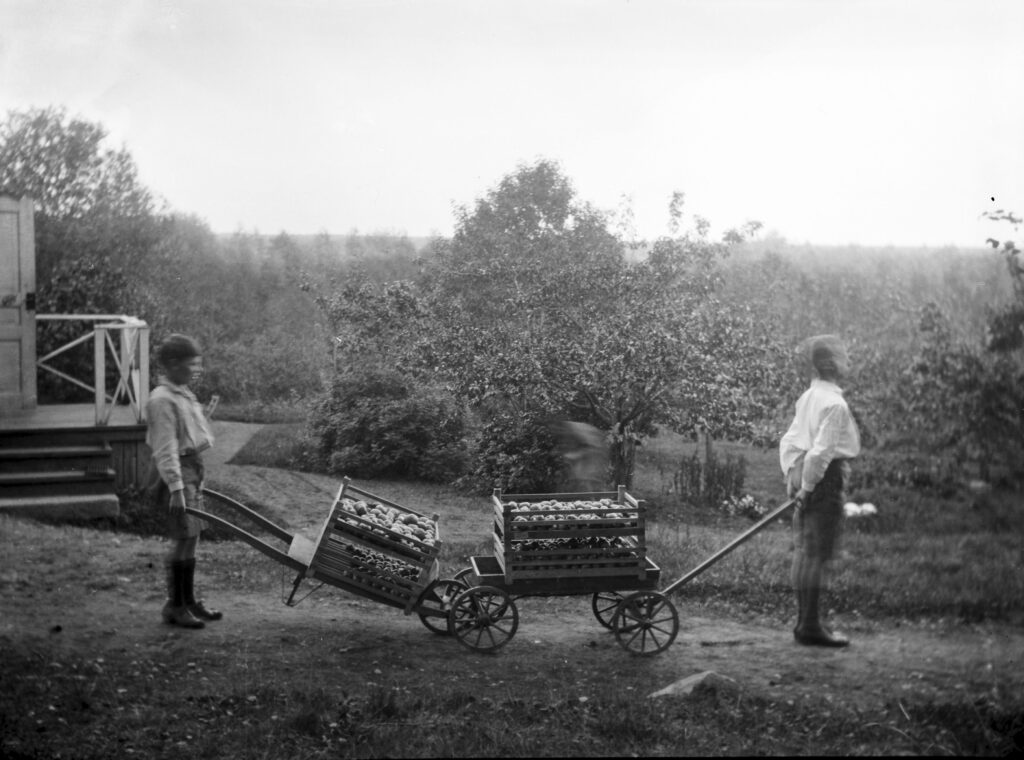Back in the fall of 2014, I had just started working as a digital media producer at the Nordic Museum. My colleagues were well underway making an app about apple cultivars in Sweden. Both me and my new colleagues had (limited) experience of uploading images to Wikimedia Commons, and we figured that photos of apple cultivars might be a useful contribution.

After the annual “apple festival” at the museum, we grabbed the cultivars that were still decent-looking after a two days on display in the Nordic Museum main hall and photographed them in decent lighting. We then uploaded them to Wikimedia Commons and added as much metadata as possible. The photos, as many others on Wikimedia Commons, are not perfect – the resolution isn’t great, the apples themselves have lost their shimmer after a few days inside, the selection of cultivars was very ad-hoc – but the images are easily findable, available for download and come with very few usage restrictions (a CC BY-SA 4.0 license to be specific).
I recently participated in a workshop arranged by Wikimedia Sverige, and realized I should check in on the photos to see how they have been utilized over the years. I added some photos to a few Wikipedia pages soon after uploading them. I also knew (because they contacted me) that the Swedish research funder Knut & Alice Wallenberg Foundation had used one of the photos in their 2017 centennial anniversity volume (since the apple Alice is named after Alice Wallenberg), but had anyone else used the photos?
The short answer: yes. The photos are now used 120 times across the Wikimedia (mainly Wikipedia) platforms. More than 80 Wikipedia articles – in 18 different languages – use one or more photos from this collection. Complete stats can be viewed using Magnus Manske’s tool Glamorous.
Counting image views on Wikipedia is a tricky task. The tool Glamorgan (also by Manske) counts each page view that contains an image (regardless of whether the user actually has the image in the viewport). For a selection of images, it also multiplies the page views if there’s more than one image on the page – i.e. the page “Apple” on English language Wikipedia is counted four times because it contains four of the images.
Anyway, with these caveats, according to Glamorgan the apple photos were viewed a total of 750,000 times just last month (with half of those hits coming from the English page “Apple”). Counting each pageview only once, it still adds up to 180,000 pageviews during October 2023 alone.

What’s the lesson learned here? Most museums make big batch uploads to Wikimedia Commons, not spending much thought to how the images might be used (I’m guilty of this myself, leading to some complaints on Commons after we swamped some clothing categories with object photos from the Nordic Museum, drowning out other images). Lowering the “signal to noise ratio” by only uploading images we actually think have a decent chance to be used is a more precise way to work in tandem with Wikimedia Commons & Wikipedia volunteers.
At the very least, hand-picking a smaller set of photos for uploading means there is time left to actually work with the metadata. Lacking metadata is in my view the largest hurdle to overcome for sharing museum collections on Wikimedia Commons – a large pile of uncategorized images simply do not provide value for the volunteers.
What do you think? Are large batch uploads still the best way to increase the reach of museum collections in the Wikimedia community? Should we vary our methods depending on the type of images? Do you have examples of other small sets of uploads making an impact on Wikipedia? Let me know in the comments!
